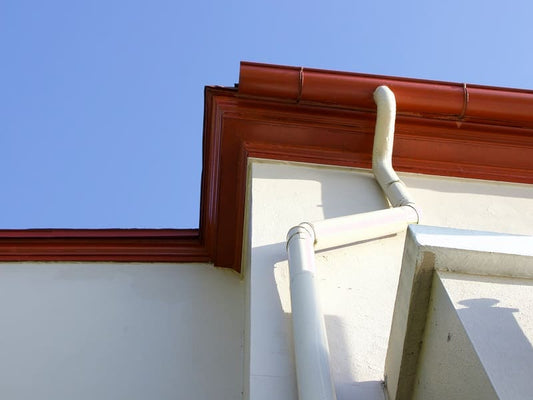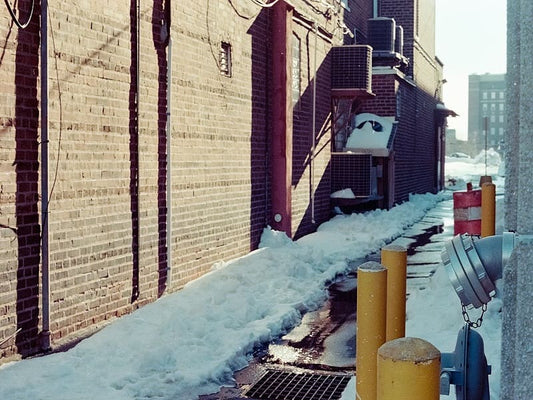
Mastering Gutter Downspout Rules: A Guide to Proper Drainage
Mastering Gutter Downspout Rules: A Guide to Proper Drainage
Gutters and downspouts are vital components of every home's gutter system. It would be easier to drain rainfall and other garbage with them. In this blog post, you will explore the gutter downspout rules and all other information you need to know about gutter downspouts.
By the conclusion of this post, you'll have more important information to guarantee your home is safe and secure against rainwater damage.
What Is a Gutter Downspout?
To begin with, a gutter system must include two components:
- Downspouts
- Gutter
The gutter is the tube that runs all the way around your house from the tip of the rooftop. It has a downward slope to guarantee that rainfall that falls from the roof collects and drains downhill. The aluminum downspout is best for draining water from the gutter.
Gutter spouts are the lateral pipes that link the home to the gutter. Water flows from the gutter and into the downspouts, where it is directed away from the house. Downspouts frequently have extensions or anything else that lets water travel away from the base of the home and not collect in puddles near the walls.
The complete gutter system is designed in this manner to prevent precipitation and snow melt from damaging the roof, walls, building foundation, and surrounding landscape.
Many drainage problems can be avoided by following the gutter downspout rules, which direct water runoff from a home's roof into a properly designed gutter system with adequate downspouts and leader extensions to let water run away from the foundation.
How Many Downspouts Should There Be, and Where Should They Be Placed?
Although there should frequently be more downspouts, many homes just have one. A downspout is required for every 20 feet of gutter. As a result, the gutters can drain effectively. Beyond the 20 foot limit, it really doesn't matter where they descend from the main gutter system as long as they are placed properly and secured.
Your gutter installation professional often handles downspout placement, but walking outside and counting them could be wise. Your current downspout count may indicate that you need to install new gutters because the old ones were improperly installed.
Gutter Downspout Material Rules
Downspouts can be manufactured of any durable material that does not contain mercury, lead, or any volatile compounds that can harm the natural environment, either by off-gassing or being transported by water. The majority of downspouts are constructed of aluminum, galvanized steel, or PVC. Following the basic downspout material rules, the downspouts must be joined to the house with a 1/4 inch pitch every 4 feet and lead to at least one downspout every thirty-five feet. Adding hanging brackets that clip into the front and rear of the downspout on the top half results in a strap component fixed to the roof with nails.
Downspout And Leader Attachment Rules
Leaders are not necessarily to be physically linked to the downspout, although they may be if you have foldaway leaders, which lets you flip them up when mowing or doing other yard work. The leads should be at least 4 feet long to carry water away from the foundation.
Gutter Downspout Placement Rules
A downspout should be installed for every Forty linear feet of gutter - Water can burst and overflow onto the concrete surface if your gutters do not have adequate drains. Overflowing rainwater may eventually seep through your home's foundation and basement walls.
The downspout should not be put near the foundation of a home, nor should poorly pitched paving stones and walkways. Overflowing rainwater can be caused by improperly dumped paving stones and walkways. What if changing the gutter downspout locations isn't an option? Installing downspout extensions is recommended. Remember that downspouts should generally relocate the water's discharge point no less than four feet farther from your home.
If an experienced roofing contractor built your gutters, you shouldn't be concerned about improperly spaced downspouts.
Gutter Downspouts Installation Rules
Installing gutter downspouts isn't difficult, but it is exhausting. You must first determine the precise length of your rain gutter downspout. Then you must either manufacture it or purchase it. All that is left will require you to attach it to the gutter. Of course, many more factors must be considered, but it all depends on your home and gutter system. One of the most important factors to consider is how far apart should downspouts be.
Gutter Downspout Maintenance Rules
Cleaning your gutters and downspouts a minimum of twice a year, in spring and autumn, is recommended. To maintain optimal water flow, remove leaves, trash, and silt.
Inspect downspouts on a regular basis for cracks, dents, or loose parts. Repair or replace damaged portions as soon as possible to avoid leaks and obstructions.
After a big storm, inspect the downspouts for clogs. To remove debris, use a plumber's snake or a lawn hose with a high-pressure nozzle.
Check the links between gutters and downspouts. Water might leak into your home's foundation due to leaking joints.
Downspouts should have a moderate slope from the gutters to the ground. This slope allows water to flow freely and prevents backups.
Downspouts should be carefully placed to deflect rainwater away from the base of your house properly. Place them at your home's corners and where water naturally collects.
The downspout should not discharge into roads or sidewalks since this might cause slick surfaces and compromise the strength of these areas. Rather, guide them to grass, a garden bed, or an appropriate drainage system.
Keep downspouts at a minimum of 6 feet away from the foundation of your property to prevent water from entering the foundation or crawl area. Consider extending downspouts further if you have a basement.








